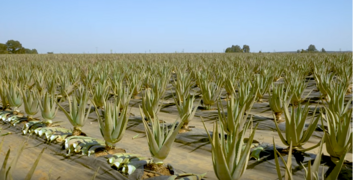Iles Evangeline
Script error: The module returned a nil value. It is supposed to return an export table.
Iles Evangeline | |
|---|---|
Military Directorate | |
| Etymology: Named for Crown Princess Amelia | |
| Nickname: | |
| Motto: "I have returned" | |
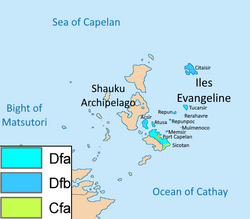 Map of Iles Evangeline and its climate classifications | |
| Candidate Jurisdiction for BORA Inclusion | |
| Capital | Port Capelan |
| Government | |
| • Type | Pre-democratic military governorate |
| • Body | Council of Colonels |
| • Prefect Plenipotentiary | Rachelle-Evangeliste Vanchamps d'Elisioile |
| Area | |
| • Total | 25,666.78 km2 (9,910.00 sq mi) |
| Population (2026) | |
| • Total | 1,485,556 |
| • Density | 58/km2 (150/sq mi) |
| Demonym | Evangeliennes |
Iles Evangeline, officially the Candidate Jurisdiction for BORA Inclusion of Iles Evangeline is a territory of Burgundie. Previously owned by Varshan which governed it as part of its Shauku Islands Province until its forces were expelled in 2021 by a joint Daxo-Alstinian invasion after which it was transferred to Daxiaese control before being sold to Burgundie in 2028.
Etymology
Named for Crown Princess Amelia.
Geography
The Iles Evangeline make up the northeastern cluster of islands in the Shauku Archipelago main island that is divided between Sotsial and Iles Evangeline is
- Citaisir: highest island, northern most island, 9,194.458 sqkm
- Tucarsir: seal island, 1,450.39 sqkm
- Repun: the offshore, 362.598 sqkm
- Rerahavre: wind harbor, 25.8999 sqkm
- Repunpoc: the lower offshore, 103.6 sqkm
- Muimenoco: winnowing woman 38.8498 sqkm
- Memsir: the island of springs 77.6996 sqkm
- Atusa: the naked one, 751.097 sqkm
- Acsir: little brother island, 4,169.881 sqkm
- Sicotan: Pleasant village, main island, 18,699.71 sqkm
Climate and environment

- Citaisir: Humid subtropical
- Tucarsir: tropical wet and dry
- Repun: tropical wet and dry
- Rerahavre:tropical wet
- Repunpoc: tropical wet and dry
- Muimenoco: tropical wet
- Memsir: tropical wet
- Atusa: tropical wet and dry
- Acsir: tropical wet and dry
- Sicotan:tropical wet in the east and wet and dry in the west
History
Prehistory

Archeological evidence suggests that the Shauku Archipelago was settled around 800,000 years ago by hunter-gatherer peoples who made use of stone and clamshell tools. These people had a mostly plant-based diet with monkey and fish flesh entering their repertoire around 50,000 years ago. Agriculture is first recorded around 15,000 years ago, but it was light due to the thick jungle vegetation. Domesticated dogs and pigs were also evidenced in this period as well. In the 4th century BCE, with the introduction of rudimentary sail technology, to the paddled dugout canoes used by the islanders, the outer islands of the Shauku archipelago became settled. There was light Oyashimane settlement since roughly 200 BC.
Medieval period
Around 980 CE, the seafaring Cai people established the Kingdom of Caitan on Citaisir, the largest island. Their rule, based on trade and diplomacy, flourished until the early 11th century when the Matsumori dynasty from mainland Oyashima extended its power, incorporating the islands into its burgeoning empire. During the Matsumori reign, Iles Evangeline experienced a cultural shift as Oyashimane traditions and governance were introduced. However, this period of relative stability was disrupted in 1175 when the expansionist Daxian Empire, under Emperor Han Fei, set its sights on the islands. In the Battle of the Three Tides, the Daxian fleet overwhelmed the Matsumori forces, establishing suzerainty over Caitan and renaming it Xin Cai. The Daxian influence brought new technologies and trade opportunities but also sowed seeds of discontent among the islanders. In 1220, a charismatic Oyashi leader named Asirpa rallied the disparate island communities and led a revolt against Daxian rule. Though ultimately unsuccessful, the rebellion ignited a spirit of resistance that would simmer for generations. The fall of the Matsumori in mainland Oyashima in the early 13th century plunged the Shauku Archipelgo into further turmoil. Local chieftains, such as the legendary warrior queen, Elune of Memsir, battled for control, establishing short-lived fiefdoms. This era of conflict, known as the Warring Tides, lasted for nearly a century and saw the rise of powerful seafaring warlords who controlled trade routes and preyed on coastal settlements. Amidst the chaos, a unique Oyashi identity began to emerge. By the late 14th century, a new power, the enigmatic Sea Lord Kaida of Sicotan, had united most of the islands under his banner. His reign marked the beginning of a period of relative stability and prosperity.
Early modern history
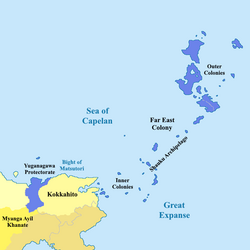
The Far East Colony was established by the Ularien Trading Company in 1638 to put pressure on the Myanga Ayil Khanate. The original colonial effort was a series of military outposts in the lands of the various factions along the border of the Myanga Ayil Khanate from where they made incursions. The Iles Evangeline were part of the colony's 'Outer colonies', the furthest populated islands from the mainland. They were sparsely populated for most of the duration of the Far East Colony, Burgoignesc settlers mainly dedicating to fishing, small scale farming or trading with the natives goods brought from elsewhere in the metropole. Rule of minor Oyashimane samurai was progressively replaced by Burgoignesc minor barons setting up shop on advantageous geographic features such as hills or the mouths of rivers. The displaced samurai often turned to brigandage as a way to survive and to exact vengeance on the outsiders for displacing them, forcing the Burgoignesc to repel them and protect the natives with which they traded. In this manner the colonists slowly gained in acceptance and cemented their own positions of authority in the Outer colonies.
In 1817, facing financial difficulties at home and a series of peasant rebellions that decimated the profitability of the spice trade in the colonies, the Duchy of Marialanus sold the Far East Colony back to Oyashima. Most of the local Burgoignesc barons chose to cut their losses and relocate to other colonies or back to the metropole. There was some residual Burgoignesc influence left in the form of children of mixed marriages, several Burgoignesc placenames, foods and sailing techniques; all of which would be found to have survived albeit slightly changed when the islands where handed by Daxia back to Burgundie several centuries later.
Late modern period
Following the abandonment of the Far East Colony in 1817 by the Marialanii Ularien Trading Company the native Oyashi daimyos and ambitious Matsutori mainlanders formed various factions and started fighting to control the territory. One such faction was the Republic of Matsutori, a short-lived Occidental-inspired republic beset by domestic political divisions and ethnic tensions, and foreign territorial encroachments and diplomatic pressure.
During the 1850s, under the command the Zurg Tezomoc, Varshan initiated a multiyear-long naval expedition to the Shauku Archipelago, thoroughly defeating the Matsutorine forces in the region and rendering Matsutorine control over the islands unfeasible. With the conquest of the archipelago, Varshan had a foothold in the Far East of Audonia and would occupy the islands for the next 170 years. Under the direction of Tezomoc and successive Zurgs of pious disposition, the archipelago was intended to become a bastion from where to spread Arzalism and its sacrificial practices westwards. Varshan shipped thousands of its own people from the mainland to numerically overwhelm the local peoples and secure the islands. In addition to the harsh Arzalist practices of human sacrifice, the local population soon saw themselves relegated to the lowest rungs of Varshani society, seen as infidels kept around only to do manual labor. The governors of the new Shauku altepetl set to whipping the population into shape building new ship construction facilities that were meant to churn out an armada with which to assail the daimyos of Oyashima.
The late 1800's saw a marked increase in naval confrontations and low level conflict between Varshan Shauku and the statelets of Oyashima, this conflict is known as the War of the Tides. What Varshan's sailors lacked in skill made up in sheer numbers and their fleets were able to overwhelm their enemies at several critical junctions of the war. The war ended in a stalemate after Varshan's main fleet was engulfed in a sea storm off the northern coast of Oyashima and destroyed, of note being this was the furthest west that Varshan's ships had ever sailed. The ruinous expense of naval buildup forced later Zurgs to step back from Tezomoc's policy of bold adventurism in the western seas, preferring instead to focus on the near abroad of continental Crona. During this period the Zurgs commissioned the construction of several magnificent temple-cities on Shauku, both as a testament to the superiority of Varshan's civilization and to house the Varshani upper class that was transported to rule the islands. These examples of monumental construction are still appreciated in the modern day as tourist hot spots and archeological troves of knowledge.
Contemporary period
Varshan's continued misrule of the Shauku altepetl continued into the 19th century. The volte-face away from seaward expansion towards Audonia left the islands as a dependency of lessening importance as time went by. The Zurgs, always fond of moving the masses of their people around to suit their immediate needs, relocated a great part of the Varshani population back to eastern Varshan to populate the slopes of the Mountains of Terror. The withdrawal of the typically haughty and arrogant Varshanis was met with joy by the locals. Uncharacteristically, the governors of Shauku allowed the locals to significantly better their diminished station by taking on the jobs the Varshani used to do on the archipelago and even to serve in the much reduced administration. This period is seen as the one relative bright spot of the entire era of Varshan rule, where the daily oppression experienced by the people was lessened. Real development of road infrastructure and productive enterprises were undertaken under the supervision of native administrators; wheat and soybean plantations especially were created to provide for the mass employment of the island's rural population and to produce a necessity in high demand in the mainland.
While Varshan mostly forgo its naval power projection on this area, it nevertheless garrisoned Shauku with sufficient forces to subjugate the islanders should they think of revolt or civil disobedience. While the garrison mostly kept to itself, several scandalous cases of rapes of local women, looting of homes and attempts to impose Arzalism on isolated villages by force created a gap of trust between the people and the soldiers ostensibly there for their 'protection'. This distrust and even outright hatred would prove a critical weakness of the Varshan defense years later during the Deluge. Locals collaborated extensively with the Daxians and Alstinians invading the islands, providing critical intelligence that greatly aided in their victory/
Daxo-Alstinian invasion of the Shauku Archipelago
-
Daxian amphibious transport dock passing a sunk Varshani frigate on its final approach to its landing zone.
-
Daxian landing craft resupplying a beachhead on April 13th, 2021.
The Battle of the Shauku Islands was an ancillary engagement during the Final War of the Deluge, fought between March and May of 2021. The Varshani naval contingent on the Shauku Archipelago was considered a liability as it could attack from the rear during the ground invasion of Varshan proper and the allied command determined that it needed to be eliminated. The combined forces of Daxia and Alstin, were tasked to launched an invasion of the archipelago.
The invasion commenced on March 3rd, with a massive naval battle, the First Battle of the Shauku Littoral. The Daxian fleet approached from their southwest stronghold in Cao and the Alstinian fleet arrived from their northwest bases in Oyashima. The Varshani navy, caught off guard by the scale and coordination of the attack, engaged in a fierce but ultimately losing battle, after a two-day running battle, the remaining ships of the Varshani navy, limped out into the Great Expanse. The Daxo-Alstinian forces were able to establish temporary naval dominance of the Shauku littoral, initiating a relentless bombardment of the islands' defenses.
With the Varshani navy crippled and coastal defenses weakened, Daxo-Alstinian forces initiated amphibious landings across the archipelago. The initial landings met with fierce resistance from the Varshani defenders, who were determined to protect the islands. Despite heavy casualties on both sides, the Daxo-Alstinian forces, aided by continuous naval and aerial bombardment, were able to secure small beachheads and begin pushing inland by March 17th. The Varshani defenders used the jungle terrain and guerrilla tactics to launch numerous counterattacks against the Daxo-Alstinian beachheads. The Daxo-Alstinian forces experienced significant setbacks throughout the week of the 21st, with some units being forced back into the sea. In response to the Varshani counterattacks, the Daxo-Alstinian forces intensified their aerial and naval bombardment. The islands' infrastructure, already heavily damaged by the initial assault, was systematically destroyed. The bombing campaign caused widespread devastation and significant civilian casualties, but it also severely weakened the Varshani defenses and made command and control communications extremely difficult, rendering coordinated operations almost impossible. During the first week of April, a number of resupply convoys arrived and the Daxo-Alstinian forces, reinforced and resupplied, renewed their amphibious assaults, determined to gain control of the beaches. The Varshani defenders, although disorganized, lacking a functional central command and depleted of resources and ammunition, continued to resist fiercely. After weeks of bloody fighting, the Daxo-Alstinian forces eventually managed to secure the beaches, establishing a firm foothold on the major islands. With the beaches secured, the Daxo-Alstinian forces began their advance inland. The Varshani defenders, now fighting a desperate rearguard action, retreated into the interior, using the ruined infrastructure to their advantage to confound Daxo-Alstinian armored manevers and to conduct ambushes. The fighting was sometimes even hand-to-hand, with the Daxo-Alstinian forces suffering heavy losses. As the Daxo-Alstinian forces advanced throughout the second week of April, the Varshani navy returned and launched a series of counterattacks in an attempt to disrupt the invasion. These attacks, the Second Battle of the Shauku Littoral, although initially successful in distracting the Daxo-Alstinian advance, were ultimately repelled, with the Varshani navy fighting to the last vessel and aircraft. The battle ended on April 25th when the last of the Varshani submarines was hunted down and destroyed. Despite the setbacks and heavy casualties, the Daxo-Alstinian forces relentlessly pursued the remaining Varshani defenders on land. The fighting continued for two more weeks, with the Varshani forces gradually being isolated and killed. Eventually, after 9 weeks of intense combat, the last Varshani strongholds were overrun, and the islands were declared secure.
In the aftermath, Daxia and Alstin divided the archipelago between them. The southern islands, fell under Alstinian control and the northern islands were occupied by Daxia. The Alstinians quickly established a military administration in their sector, focusing on restoring order and rebuilding infrastructure. They invested in the islands' agricultural lands and established naval bases to protect their trade routes and project power into Audonia. The initial occupation was met with pockets of resistance, with a guerrilla movement, comprised of former Varshani soldiers and disgruntled civilians, launching sporadic attacks against Alstinian forces and infrastructure projects. The Daxians prioritized the exploitation of the islands' mineral wealth, establishing mining operations and industrial complexes. They also constructed military fortifications, transforming the northern islands into a formidable bulwark against potential Varshani counterattacks. They forcibly deported the vast majority of the Vasrhani almost immediately and have few cases of resistance
Daxian military rule
A joint naval invasion by Alstinian and Daxian forces pushed Varshan's forces from the islands and brought an end to its rule there. A period of popular resistance driven by Arzalist priests followed. The Daxian military enacted brutal mass reprisals and deportations that however succeeded in quieting down the situation. Civilian Varshani administrators were summarily dismissed, Arzalist shrines shuttered and all public gatherings of over three people prohibited. Whatever produce was imported from the mainland was requisitioned by the army to supplement its rations, the locals were introduced to a new diet consisting of disgusting aspic food rations courtesy of Agario. Four months after introduction, there was a riot at a food distribution center in which twenty tons of aspic rations were set on fire. Daxian rule of the unruly islanders was becoming more expensive and less advantageous than previously thought.
Handover to Burgundie
Liyu, was transferred to Burgoignesc administration on November 17th, 2028 as a reparation for the loss of Ayermer during the Second Great War which until that point had remained a major sticking point in the relationship between Burgundie and Daxia to the point that both countries, as a matter of administrativia, remained technically at war until the handover of Liyu and the signing of the Instrument of the Formalization of the Cessation of Hostilities Stemming from the Global Conflicts of the 1930s and 1940s.
A respectful ceremony between outgoing District Chief, Gong Farbo, and incoming Prefect Plenipotentiary, Rachelle-Evangeliste Vanchamps d'Elisioile and their retinues of diplomats, marines, sailors, and administrative personnel after which its name was changed to Iles Evangeline after Crown Princess Amelia, of Burgundie who helped to broker the deal.
Government
| This article is part of a series on the |
| BORA |
|---|
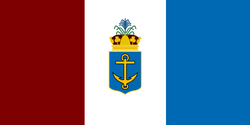 |
| Statistics |
|
| Key topics |
| Provinces |
|
Burgundie portal |
Iles Evangeline is part of the Burgoignesc Overseas Territory Assembly's Polar Burgundies geographic designation. Burgoignesc Overseas Territory Assembly is a constituent country equivalent of Burgundie with its own assembly, prime minister, budget, and laws. Burgundie's national governmental influence is limited to subsidies, education, and security, however, its financial and cultural institutes cast a long shadow across Iles Evangeline.
Iles Evangeline is a candidate constituent province within Burgoignesc Overseas Territory Assembly with its own semi-elected Governor-Epistates, representative legislative body, and court system.
Iles Evangelineures are Burgoigniacs/Burgoignix with complete civil and economic rights, and citizenship (political rights) under the same federal service criteria as all residents of Burgundie. Burgoignesc is the official language but Oyashima and Burgoignesc are both in use.
Provincial executive
The provincial executive is the Governor-Epistates. Three candidates are elected by a single transferable vote election held every 5 years, the three candidates are presented to the Court of St. Alphador and the next Governor-Epistates is chosen from these candidates. If the citizenry rejects the selection, a run-off election is held with the remaining two candidates.
Provincial legislature
Like the Citizens Court of the National Assembly (Burg. La Assemblee de Ciutadans de l'Assemblee Nacional, ACAN), The Iles Evangeline Citizen's Court of the Provincial Assembly is a unicameral legislator. It makes provincial law, has the power of the provincial purse, and has the power of impeachment, by which it can remove sitting members of the provincial government. The Assembly has three seats for each province, one for the Burgoignesc Overseas Territory Assembly's Iles Evangeline liaison, 3 for the clergy, 3 seats reserved for municipal leaders, and 3 for a rota of private business leaders. On 6 occasions throughout the year 3 more seats are opened to the public to debate topics that are not on the annual legislative agenda.
Administrative divisions and local governance
Military
Antilles falls under the Navy's Far Eastern Command, the Army's Al'qarro-Dolong Audonian Command, the Royal Air Service of Burgundie's Cronan Command, and the Vocivine National of Burgundie's VocivineCommand. Alcairet's strategic location means it is a major military hub for all branches of the Burgoignesc Security Forces with large basing facilities existing for the army (in particular the Burgoignesc Foreign Legion), navy, Royal Air Service, and Vocivine.
Iles Evangeline is home to two military bases, Fort St. Genevieve, jointly operated by Navy of Burgundie and the Revenue Guard, and Fort St. Ambrose, operated by the Foreign Legion.
Fort St. Genevieve
| Fort St. Genevieve Northern Cathay Joint Maritime Patrol Station | |
|---|---|
| | |
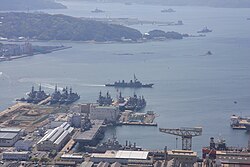 | |
| Site information | |
| Owner | Burgoignesc Security Forces |
| Operator | Navy of Burgundie |
| Controlled by | Burgoignesc Borealis Combined Forces Command, Western Sector |
| Condition | Operational |
| Site history | |
| Built | YEAR |
| Garrison information | |
| Occupants | Navy
|
Fort St. Ambrose
| Fort St. Ambrose Garrison of the Transitional Detachment of the Foreign Legion and National Gendarmerie in Iles Evangeline | |
|---|---|
| | |
 | |
| Site information | |
| Owner | Burgoignesc Security Forces |
| Operator | Army of Burgundie |
| Controlled by | Burgoignesc Borealis Combined Forces Command, Western Sector |
| Condition | Operational |
| Site history | |
| Built | YEAR |
| Garrison information | |
| Occupants | Foreign Legion
Treaty Observation and Implementation Corps of Burgundie
|
Emergency response
National Gendarmerie of Burgundie, Overseas Gendarmerie, Borealis Command
Revenue Guard, Grand Station Orxital
Society

| This article is part of a series on the |
| Culture in Burgundie |
|---|
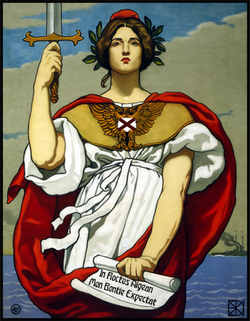 |
| Society |
| Arts and literature |
| Other |
|
Burgundie portal |
Ethncity according to the official census (2020)
The ethno-racial makeup of Iles Evangeline has changed considerable over the years. Originally lightly settled by peoples from Oyashima since around the year 200 CE, the islands never held more than a few thousands at their population peak. The disastrous aftermath of the Tezomoc Expedition for the Oyashima fleet led to an almost complete exodus from the islands, with Varshan bringing in thousands of its own laborers to work on the many mines on the islands in the late 19th century. This demographic dominance by peoples of Varshan origin continues to the modern day, although the brief Daxian rule and now the Burgoignesc administration has resulted in the return of some Oyashimans along with new Daxiaese, Rusanan, and Bergendii arrivals. Daxiaese and Rusanan residents were offered a stipend to leave the island upon the transfer of power to Burgundie.
A renewed emphasis on Oyahsi spiritual practices is evident throughout the islands. Reverence for nature, ancestor worship, and the belief in kamuy (spirits) are being openly celebrated and integrated into daily life. While traces of Arzalism and Christianity remain, the Oyahsi worldview is experiencing a revival under the supportive Burgoignesc administration. Education in Iles Evangeline is embracing a dual approach, combining modern curricula with traditional Oyahsi teachings. Elders, recognized as repositories of cultural wisdom, play a vital role in educating younger generations about Oyahsi history, language, and customs. This ensures that Oyahsi heritage is passed down and cherished. The Oyahsi worldview, with its emphasis on harmony with nature, respect for elders, and community solidarity, is experiencing a resurgence. The Burgoignesc administration is actively encouraging the adoption of these values, fostering a sense of pride and unity among the Oyahsi people. The strong emphasis on kinship and family ties, a hallmark of Oyahsi culture, is being reinforced and celebrated. Extended families living together in traditional Oyahsi settlements is encouraged, strengthening community bonds and cultural continuity. Cuisine: Iles Evangeline's culinary landscape is undergoing a transformation, with a focus on Oyahsi traditional foods. Restaurants and markets are showcasing dishes like smoked salmon, seaweed soup, and rice cakes made from wild grains. These dishes are not only delicious but also serve as a connection to the islands' Oyahsi heritage. Oyahsi artistic traditions are flourishing under the Burgoignesc administration's patronage. Workshops and exhibitions are dedicated to showcasing intricate wood carvings, colorful textiles, and pottery adorned with symbolic patterns. Oyahsi music and dance performances are being promoted, celebrating the islands' vibrant cultural heritage. Oral storytelling, the heart of Oyahsi literature, is being actively preserved and promoted. Elders are encouraged to share their knowledge and stories with younger generations, ensuring the continuity of Oyahsi cultural narratives. Architecture: The Burgoignesc administration is investing in the restoration and preservation of traditional Oyahsi dwellings, known as chise. These structures, with their natural materials and unique design, are not only functional but also serve as powerful symbols of Oyahsi identity. Traditional Oyahsi sports, such as archery, wrestling, and canoe racing, are being revived and promoted as a way to celebrate Oyahsi heritage and foster community spirit. These competitions provide opportunities for islanders to connect with their roots and showcase their skills. The bear, a sacred animal in Oyahsi culture, is experiencing renewed reverence. Its image can be seen in art, crafts, and even public spaces, symbolizing strength, wisdom, and the connection to nature. Other important symbols, such as the sun, moon, mountains, and sea, are also being highlighted, reminding islanders of their deep connection to the natural world.
Unique among the islanders are a few enclaves of Danhmong. They have unique customs and culture but are renowned for their farming of Murder Hornets and their husbandry of the Crested honey buzzard both to find the murder hornets and for Falconry.
Economy and infrastructure
-
A field of aloe plants.
-
Pearl farming
The economy of the islands is relatively developed and varied as they possess significant natural resources that the Varshani state sough to develop. Iles Evangeline have significant reserves of copper and thus strip mining of these is a major economic activity with an estimated production of four hundred thousand metric tons extracted in 2021. All of Iles Evangeline's copper mines are now under the control of the Department of Trade which is introducing the use of newer technology to increase copper production. Also present are large deposits of blue limestone and diorite which were highly valued by the Varshani for use in the construction of their monuments and temple complexes. So important were these materials to the mainland that most of the mines were nationalized and placed under the direct control of state run Arzalist foundations that directed the materials specifically to temples under construction in the mainland. Another important economic activity is the cultivation of aloe vera, which is used in Varshan's traditional medicine. Under Varshan rule, almost one third of the island's arable surface is dedicated to planting aloe fields. Tourism from mainland Varshan began to experience moderate growth and a few resorts catering to the upper castes were opened in the late 2000's. The partial restoration of the Blood Fane of Buruso saw a marked uptick in arzalist pilgrimages to the site so much that the Varshan Control Commission lodged at formal complaint with Daxian authorities, fearful of arzalist proselytism. Burgundie has banned Varshani travellers all together.
Agricultural production, primarily of aloe vera, wheat, soybeans, potatoes, sugar beets, onions, pumpkins, corn, raw milk, and beef, Guar and guar gum
Tourism has currently been severely restricted as the Treaty Observation and Implementation Corps has set about to reconstitute the government and economy of the Iles Evangeline. But early surveys point to winter sports being a primary draw with skiing/snowboarding and dog sledding being primary activities. Thermal baths and locally brewed beer are expected to be a strong draw for the après-ski set.
Copper and thus strip mining of these is a major economic activity with an estimated production of four hundred thousand metric tons extracted in 2021. All of Iles Evangeline's copper mines are now under the control of the Department of Trade which is introducing the use of newer technology to increase copper production. Also present are large deposits of blue limestone and diorite, lead, manganese, silver, and zinc.
Aquaculture in the Iles Evangeline is focused mostly on the raising of chum salmon, Sockeye salmon, Dolly Varden trout, shrimp, and saltwater clams. Artisanal fishing is the only allowable form of pisciculture in Iles Evangeline and it produces about 1-200 tonnes of fish each year. Since the Burgoignesc administration began there has been demand for investment in modernization of pisciculture across the Iles Evangeline to ramp up exports of Sockeye salmon specifically both farmed and wild caught. A team of experts are searching for suitable sites for copper alloy sea cages for the sockeye. The pisciculture sector, like all other sectors in the Iles Evangeline are severely underdeveloped in the Occidental perspective. The Burgoignesc Ministry of Economy, Finance, and the Recovery's Department of Trade and the Ministry of Agriculture and Food have established a Joint Office of Evangeline Economic Development and Food Security to identify "locally acceptable avenues to increase development and output for both local and Metropolitan consumption".
Poro ruru is an artisanal salty made in the Shauku Archipelago that is becoming a major heritage industry under Burgoignesc rule.
The native Ainu people of Shauku Archipelago are famous for creating a type of boat called the pinisi and Burgundie had reinvested in making these boats is a cottage industry for the islanders so that they can have their own indigenous deep-sea fishing fleet and local trading fleet with Sotsial and Oyashima. These ships are carries seven to eight sails on two masts, arranged like a gaff-ketch with what is called 'standing gaffs' — i.e., unlike most Occidental sailing ships using such a rig, the two main sails are not opened by raising the spars they are attached to, but the sails are 'pulled out' like curtains along the gaffs which are fixed at around the centre of the masts. This allows the gaff to be used as a crane to embark and disembark up to 200 tonnes of breakbulk cargo. These ships usually carry timber, local produce, and commodities. Since the annexation of the islands by Burgundie there have been some converted to tourism crusiers and day trippers who h have proven wildly popular. The construction itself is also a tourist attraction.
Port Capelan is a small container port that can accommodate two feeder sized ships at once. It is used to export the agricultural goods from the island but also to supply the locals with sustenance since the island is not self-sufficient.
Trade is handled throught the Shauku Island Trading Company (SITC), a joint stock company that is owned 20% by Alstin, 20% by Burgundie, 20% by O’Shea Container Shipping, and the remaining shares are publically traded. The SITC handles the imports and exports from Iles Evangeline and Alstinian Sotsial. It runs a regular route from Equitorial Ostiecia and Deralveca City, Alstin.
Infrastructure
Transportation
Railways: The passenger rail in Iles Evangeline is being completely rebuilt to implement standard gauge and establish greater connectivity for service. This work is planned to be completed by 2039 at which point it will become a unique rail service provider, a body that has not yet been formed.
Highways: The country has a relatively extensive road network, connecting major urban areas and economic centers. However, the quality of roads varies significantly, especially since the Daxo-Alstinian invasion. While major highways are paved and well-maintained, many rural roads are unpaved and can become difficult to navigate during the monsoon season. The new Burgoignesc government has undertaken projects to improve and expand the road network.
Maritime: Iles Evangeline-Korell ferry which makes one round trip every week with a stop at Ankae in Metzetta. Marine Highway ferry system to connect the islands together with Sotsial and Oyashima.
Airports: Iles Evangeline is accessible through a connecting flight from Anjiro International Airport on the Alstinian Sotsial. Capelan Regional Airport (CRA) is a state-run public airport situated in the main island, it has two runways with an asphalt surface measuring 1,524 x 46 m. For the 12 month period ending on March 13 2025,the airport had a total of 15,032 flights and an average of 18 daily flights. A new runway and renovated passenger areas are planned for 2029.
Energy and electricity
Because the energy grid was destroyed, the new Burgoignesc government is working to rebuild the entire energy infrastructure. Most of the power on the islands is currently being provided by Burgoignesc naval powerships. The BORA Waste to Energy Compact went into effect in 2027 with construction of a Waste to Energy power plant starting in 2028. Two plants were built in Iles Evangeline generates approximately 208,000 kWh/day with a waste reduction capacity of 220,000 kg/day.
Phone service and internet
Phone service is provided by Island Mobile, and landline service is available and is still popular with those who live in the rural parts of the islands. Because the infrastructure weas destroyed by the Daxo-Alstinian invasion, cellular service can be spotty at times as the new network is being built.
Highspeed internet service is provided by National Wireless Services, a public-private ISP offered to areas of the Burgoignesc thalattocracy that don't have enough demand to create a competitive market. Residential and commercial internet speeds average 1 gigabit. National Wireless Services piggybacks on the Island Mobile towers and also has two towers of their own. Satellite internet is becoming increasingly popular as the economy recovers.







